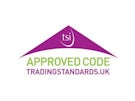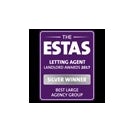There are 23.36 million properties in England and Wales with 64% being owner occupied and 36% being rented either from a private landlord, local authority or housing association.
Over nine out of ten of those English and Welsh owner-occupied properties are a whole house or bungalow. Now, most people would assume they would be freehold – however, of those renting nearly half of rental properties, 44% to be precise, lived in other leasehold apartments and flats.
It might be wise to quickly explain the difference between freehold and leasehold. When someone owns the freehold of a property they own it outright, including the land it is built on, whilst with a leasehold property the leaseholder owns the property for the length of their lease agreement. Leaseholders must pay the person who owns land (the freeholder) ground rent and other fees. When the leasehold ends, ownership returns to the freeholder although the leaseholder can extend the lease or they can buy the freeholder out, but there are rules and regulations with regards to doing that.
Therefore, it would be safe to assume that houses are freehold and flats are leasehold .. wouldn’t it? Not necessarily! Most houses are freehold but some might be leasehold – usually through shared-ownership schemes – but more and more new homes builders are selling houses on a leasehold as well. The protection of the law afforded to leaseholders who own a flat is massive, but sadly lacking to leasehold houses sold privately.
Looking specifically at the figures for Sutton, at the last count in SM1 and SM2 there were 30,260 properties. Since 1995, 33,626 properties in SM1 and SM2 have changed hands and have been sold. Looking further at those 33,626 transactions in SM1 and SM2 since 1995, using data from Land Registry and solicitors practice My-Home-Move, 25.55% have been leasehold (higher than the national average of 15%).
However, I am concerned about a few new homes builders selling new houses (not flats – houses) as leasehold. There has been a growing (yet small) trend for new-build houses to be sold as leasehold in recent years. While not all house builders use this model, those that do maintain it helps make developments financially viable.
The issue comes when builders sell the freehold separately to an investment company without informing the lease holder – which they are legally allowed to do without telling the leaseholder. In England and Wales, the “right of first refusal” to buy the freehold is written in law to leaseholders of flats i.e. the freeholder must offer it to the leaseholders of all the flats of the building first), but not leaseholders of houses.
.. and this is the point I am trying to get across. If you are buying a new home and it’s a house (i.e. not a flat) – please check very carefully indeed whether its freehold or leasehold. If it is a leasehold, whilst you do have rights, they are not as strong as for those people buying a leasehold flat. I appreciate I am only talking about a very small percentage of the property market, but potentially this could end up costing thousands of pounds to those affected.









